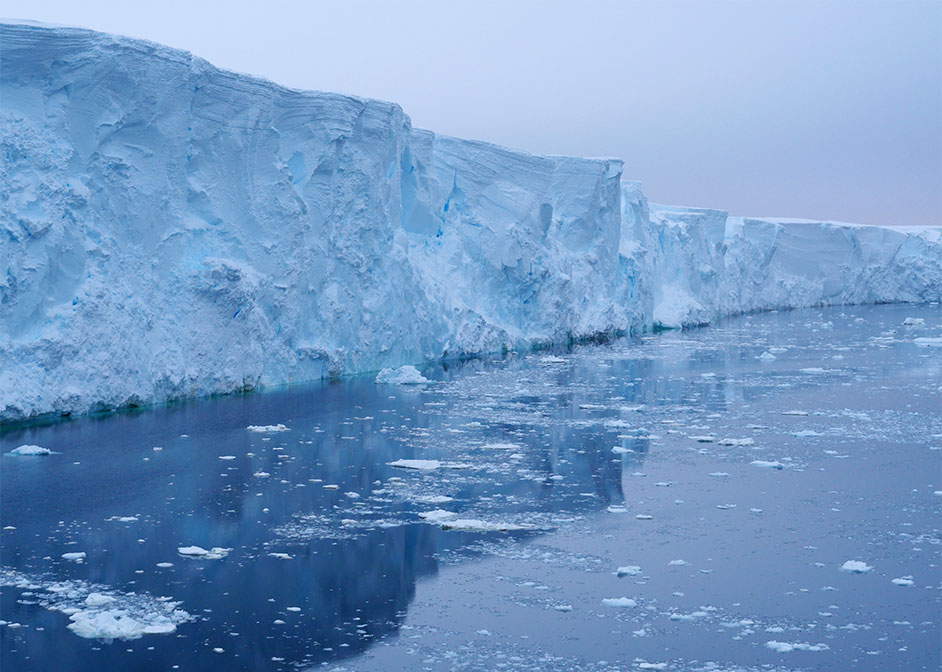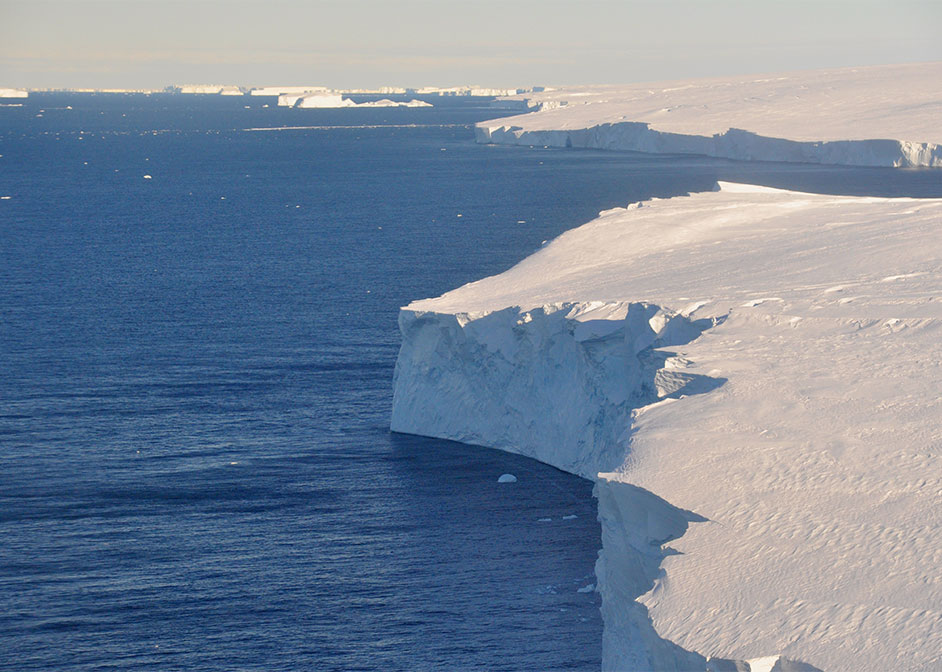Julia Wellner and Colleagues Publish Bathymetry Data on Thwaites Glacier, Antarctica
Ice melt into the Amundsen Sea from Thwaites Glacier in West Antarctica accounts for about four percent of the world's sea-level rise, according to researchers.



Scientists want to know how soon we could expect an even higher rise in sea levels if the glacier were to collapse.
University of Houston geology associate professor Julia Wellner and researchers with the International Thwaites Glacier Collaboration mapped channels underneath the glacier with bathymetry data to better understand how warm water melts the glacier. The data was recently published in The Cryosphere.
“In general, it is too cold in Antarctica to have significant melting on the surface of the ice,” said Wellner, who is a faculty member at UH’s College of Natural Sciences and Mathematics. “Most melt is driven by ‘warm’ water reaching the base of the ice and driving melting from below.”
In this case, Wellner states warm just means a degree or two above zero.
“The warm water reaches the ice by flowing through channels in the seafloor. That is why our mapping of the bathymetry, or seafloor geometry, is significant,” she said.
The data was collected during a research trip to the glacier in January through March of 2019. Ice breakup in early 2019 allowed the team to survey about 770 square miles of sea floor at Thwaites Glacier’s ice front.
The area surveyed was previously hidden beneath part of the floating ice shelf extending from Thwaites Glacier, which broke off in 2002. In following years, the area was inaccessible due to thick sea-ice cover.
The team’s findings show that the sea floor is generally deeper and has more deep channels than was previously thought.
“We found the coastal sea floor, which is incredibly rugged, is a really good analogue for the bed beneath the present-day Thwaites Glacier,” said lead author Kelly Hogan of the British Antarctic Survey, “both in terms of its shape and rock type. By examining retreat patterns over this sea-floor terrain we will be able to help numerical modelers and glaciologists in their quest to predict future retreat.”
Wellner and researchers from the International Thwaites Glacier Collaboration visited the glacier again from January to March of 2020. Wellner said papers from that trip are expected in the fall of 2021 and will emphasize their work on sediment cores.
The collaboration is funded by the U.S. National Science Foundation and the U.K.’s Natural Environment Research Council.
- Rebeca Trejo, College of Natural Sciences and Mathematics